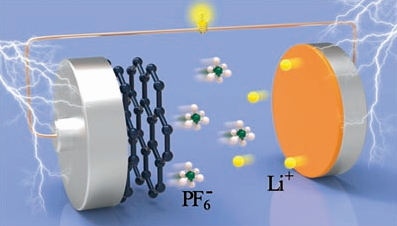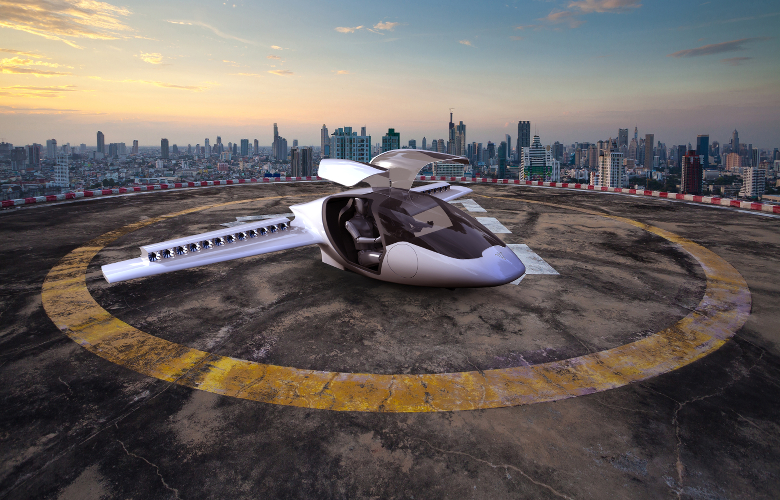Electric motorcycles are a recent addition to a historic race on a tiny island neatly centered in the Irish Sea between Scotland, Northern Ireland, the United Kingdom and Wales. Its 75,000 inhabitants cluster in villages that look like movie sets of rustic, pre-war England. Manx cats come from the island, tailless little creatures with long back legs that look almost rabbit-like. Bonus fact: Maurice, Robin and Barry Gibb (the Bee Gees) were all born on the Isle of Man. Having so few people to share the 688 miles of roads could make speeding a huge temptation. The two-lane roads are twisty and narrow, though, and even without an official speed limit on many thoroughfares, speeds rarely average over 50 mph. Drivers are limited to that speed for the first two years after they get their license, and it’s the qualifying minimum speed for motorcyclists wanting to compete in the annual race. That means a run around the Snaefell Mountain course …
Sustainable Aviation Symposium 2016: Would You Believe Eric Darcy Deliberately Blows Up Batteries?
Eric Darcy is NASA’s go-to guy for battery safety. He is Battery Group Lead for Projects & Integration at NASA-Johnson Space Center in Houston, Texas, and consults frequently with the National Renewable Energy Laboratory in Colorado. His talk at the First Sustainable Aviation Symposium was titled, “Passively Thermal Runaway Propagation Resistant Battery Module That Achieves > 190 WH/KG.” The output may not sound like much, being at the middle-to-high end of lithium battery performance: but the promise of passive thermal runaway resistance is all-important. Remember, too, that larger output numbers are usually for individual cells. Putting cells into a battery pack with battery management system (BMS) components, wiring, etc. usually reduces overall performance per weight. A few years ago, Dr. Darcy told his table at lunch during a symposium, that by matching batteries closely (to a fanatical degree, it seemed), overseeing their production under conditions exceeding six sigma quality control levels, and testing them intensely, he had built battery packs for space …
Autonomous Drones Air-Drop Medical Supplies
Zipline, a San Francisco-based startup, has partnered with the government of Rwanda to air-drop medical supplies to remote villages, truly a potential life-saver for many without immediate access to medicine or blood for transfusions. Several firms in America have promised delivery of consumer items using drones, with Flirtey’s quadrotor drone delivering “a package that included bottled water, emergency food and a first aid kit” to an uninhabited residential setting in Hawthorne, Nevada on April 7. Flirtey calls the flight “the first fully autonomous, FAA-approved urban drone delivery in the United States.” Another firm, Matternet, displayed its quadrotor delivery systems five years ago at the Green Flight Challenge Expo held at NASA Ames Research Center following the completion of the flying completion. They have delivered in New Guinea, the Philippines, Bhutan and Haiti for Doctors Without Borders/Médecins Sans Frontières (MSF), and according to the New York Times, “experimenting with the government of Malawi and with UNICEF to deliver infant H.I.V. tests …
Sun Flyer Rollout
Yesterday, George Bye’s Aero Electric Aircraft Company (AEAC) rolled out its Sun Flyer, an electric two-seat training aircraft with photo-voltaic cells on the wing and tail to extend its range, and over two or three days, recharge its batteries. With orders for 65 Sun Flyers already on the books, interest is high in this airplane. In an email, George informed your editor that, “We’re using the Enstroj Emrax 268 high voltage electric motor, rated at 100 kW and 400 volts nominal. Of course, the motor ‘throttle’ is electronic.” He responded to a query about battery monitoring and protection: “Battery safety is multi-fold. We monitor cells individually, cells within each ‘battery box’, (with electronic disconnect), battery box system electronic and mechanical disconnect, and then [provide] thermal and vapor barriers.” Looking a great deal like a fixed-gear Lancair, Sun Flyer will offer extremely low operating costs, a real draw for prospective pilots. Bye estimates operational costs, including charging and maintenance, will run …
Toyota Explores the Magnesium Alternative
We’d all love an electric car (or an airplane) that goes more than 100 miles flashing a “Low Battery” indicator. Researchers at the Toyota Research Institute of North America (TRINA) are working on a divergent approach to achieving greater range and smaller battery sizes by using magnesium as an active ingredient. In a bit of serendipitous synergy, Toyota principal scientist and chemical engineer Rana Mahtadi heard fellow researchers discussing development of an electrolyte for a practical magnesium battery. She was researching hydrogen storage materials and their application to fuel cell technology at the time, and realized the two lines of research intersected nicely. Toyota explains that “Magnesium metal has long been theorized as a much safer and more energy-dense alternative to current lithium battery technology. Lithium metal, in its natural state, is unstable and can ignite when exposed to air. In order to make lithium metal safe for batteries, ions are taken from the lithium metal and embedded into graphite …
Silicon, Sulfur and 3D graphene Makes High-Performance Battery
Lithium-sulfur batteries display winning qualities, such as low production cost, environmental friendliness, and high energy density. Researchers usually give up, or look elsewhere, when the materials’ poor cycle life and loss of active materials on both anode and cathode show up. Researchers at Beihang University in Beijing report developing “a new Li-sulfur battery using honeycomb-like sulfur copolymer uniformly distributed onto 3D graphene (3D cpS-G) networks for a cathode material and a 3D lithiated Si-G network as anode.” They report “a high reversible capacity of 620 milli-Amp hours per gram, [and an] ultrahigh energy density of 1,147 Watt-hours per kilogram (based on the total mass of cathode and anode), good high-rate capability and excellent cycle performance over 500 cycles (0.028% capacity loss per cycle).” The materials used in the cathode and anode presented challenges. The “inherent insulation of sulfur” on the cathode and the high solubility of polysulfide intermediates cause an inability of the active materials to respond to one another, …
Siemens Unveils a Little Something Extra
Extra 330Ls have a long nose, usually cowling a Lycoming IO-540 or -580. The 330 EL, though, houses 14 battery packs of 18.6 kilowatt-hours each (according to InfoAvion, an Argentinian publication), all to allow the Siemens D-SP260 to flex its 300 horsepower muscle and demonstrate what 1,000 Newton-meters (737 foot-pounds) of torque can do for vertical rolls. Flying Magazine thought that its display at AERO Friedrichshafen in Germany “could be a harbinger of the future of emission-free airshow performances.” Siemens intends to use the 330LE for flight test and optimization of a electric propulsion system based on the 50 kilogram (110 pound) motor on display. Even the large battery array under the clear plastic cover (for Friedrichshafen only, one presumes, although it would be a style leader on any airfield) will give only about 15 to 20 minutes of wide-open airshow power, enough for a great routine, lacking only the airshow noise. We’re all looking forward to a demonstration.
Doubling Down on Ions
Dual-ion intercalation alloying process probably won’t roll musically off the tongue, but the process has made a test cell that has greater specific density and energy density than the batteries in Teslas. Or the Chinese BYD electric sedan, according to its makers. It’s “environmentally friendly” and low cost, to add to its sales appeal. Yongbin Tang and his colleagues at Shenzhen Institutes of Advanced Technology of the Chinese Academy of Sciences (CAS) have created an aluminum-graphite dual-ion battery (AGDIB) that, “Compared with conventional LIBs, …shows an advantage in production cost (~ 50% lower), specific density (~1.3-2.0 times), and energy density (~1.6-2.8 times).” The team claims their battery can reach a volume energy density of the AGDIB ~560 Wh/L, “considerably higher” than Tesla’s Model S Panasonic batteries (~350 Wh/L) or the BYD E6’s LiFePO4 lithium iron phosphate cells (~200 Wh/L). The team further claims their battery outperforms electrochemical capacitors. After 200 charge-discharge cycles, the battery has a reversible capacity of ~100 …
Quart in a Pint Pot
Lilium is still in its incubator stage, but drawing a lot of interest for its radical two-seat, high-speed aerial vehicle. EIT Climate-KIC, one of the funding organizations helping underwrite this startup, includes some startling claims in Lilium’s description. “Lilium is designing the world’s fastest and highest-range electric aircraft that is commercially available. “The two-seated light aircraft consumes half the energy of today’s most efficient electric cars and is so quiet that it can’t be heard flying in 1 km (@3,300 feet) altitude. It is propelled by electric impeller engines and features an extensive safety concept comprising a 3-fold redundant fly-by-wire control system, 12 redundant batteries and engines as well as a parachute rescue system for the whole aircraft.” The ESA Business Incubation Center, another of Lilium’s backers, has more: “Lilium is developing, building, and selling a two-seated electric jet capable of vertical take-off and landing (VTOL). The company was founded in February 2015 by four engineers and Ph.D students from Technische Universität …
Yi Cui and team Devise a 10X Anode
Batteries are complex things to design and make, with materials scientists and chemists facing unlimited numbers of options for materials choices, formulations and proportions, and manufacturing techniques that will make hoped-for performance attainable on a commercial level. Yi Cui and a distinguished array of undergraduate and graduate students at Stanford University have written 320 academic research papers since 2000, with the rate of publication seeming to increase every year. To put icing on that multi-layered cake, Dr. Cui has helped found his own battery company, Amprius, using his depth of knowledge to take batteries in directions interesting enough to draw the attention of well-known investors – including Stanford. The only recent information on the web site today shows the firm is looking for a battery scientist and a battery engineer. His academic and research work continue, though, with his latest efforts producing a turn away from his work with silicon – ,making a novel lithium/carbon electrode with extremely high volumetric …



